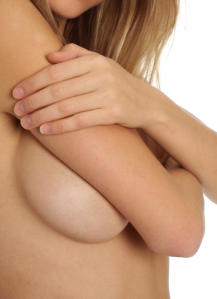Breast implant rupture, whether it’s saline or silicone, is a potential risk following breast augmentation with implants. During your personal consultation with Dr. Mosser before the surgery, it is best to learn everything there is to know about breast implant rupture, particularly when it comes to detecting the early signs. After all, a well-informed decision is one of the key factors in achieving desired outcomes.
When Saline Implants Rupture
Rupture of saline (saltwater) implants are easy to detect because it deflates quickly, resulting to a sudden change in size or shape of the breasts. When this happens, the saline solution is absorbed into the body which is typically harmless unless there is bacteria or fungus that developed within the implant and potentially cause an infection.
When Silicone Implants Rupture
In contrast to the sudden deflation of saline implants, a silicone implant rupture is quite subtle. For this reason, cases of silicone implant rupture go unnoticed during the initial period. In some cases, the rupture is only detected once the silicone implant is removed.
Two things can happen in silicone implant leaks: the silicone will stay within the capsule (intracapsular) or the silicone filling can leak out of the capsule and make their way via the lymphatic network to neighboring organs such as the lungs.
Ways to Find Out Implant Rupture
A saline implant rupture is recognizable for its sudden deflation and a succeeding abrupt change in the size and shape of the breasts.
With silicone implant ruptures, there could be swelling, pain, tenderness, numbness, tingling or a burning sensation. An MRI (magnetic resonance imaging) is considered the most accurate test for detecting rupture in silicone implants.
“Overall, MRI was 94 percent accurate in detecting ruptured implants, compared to 72 percent accuracy for ultrasound. Magnetic resonance imaging also had a lower “false-negative” rate: five percent, compared to nine percent with ultrasound. Thus MRI was less likely to miss a ruptured implant, compared to ultrasound.
However, both tests performed well in correctly indicating when implants weren’t ruptured. The “negative predictive value” was 94 percent with MRI and 85 percent with ultrasound.”
Conclusively, breast implant ruptures are rare. However, being vigilant of the signs of rupture is still important following surgery. For more information on possible risks and complications following breast augmentation, call 415.398.7778 to schedule an appointment today!


